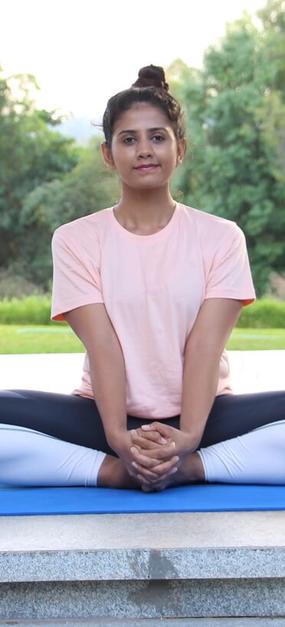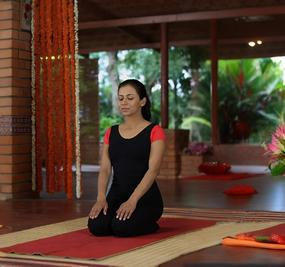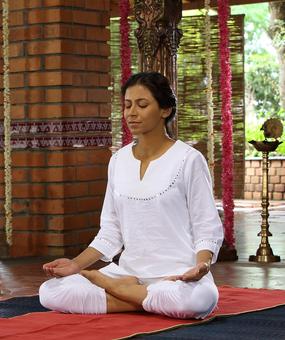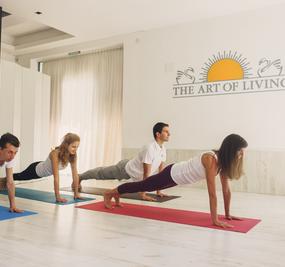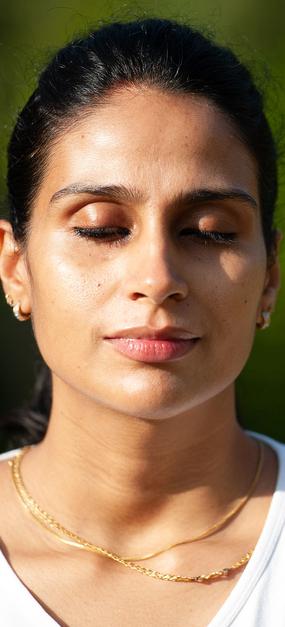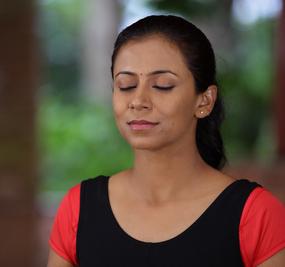This asana is pronounced as pud-mah-sa-na
Padma = Lotus, asana = posture or pose or position
Padmasana or Lotus position is a cross-legged yoga posture which helps deepen meditation by calming the mind and alleviating various physical ailments. A regular practice of this posture aids in overall blossoming of the practitioner, just like a lotus; and hence the name Padmasana. In Chinese and Tibetan Buddhism, the Lotus pose is also known as Vajra position.
How to do Padmasana (Lotus Position)
- Sit on the floor or on a mat with legs stretched out in front of you while keeping the spine erect.
- Bend the right knee and place it on the left thigh. Make sure that the sole of the feet point upward and the heel is close to the abdomen.
- Now, repeat the same step with the other leg.
- With both the legs crossed and feet placed on opposite thighs, place your hands on the knees in mudra position.
- Keep the head straight and spine erect.
- Hold and continue with gentle long breaths in and out.
Padmasana Video
Duration/Repetitions:
The length of time to sit in the padma-asana depends on your intention. In the course of a typical asana routine you might hold it for several minutes or until you experience discomfort in the legs. When used as a meditation posture you hold it for the duration of the meditation.
Mudras for Padmasana
Mudras stimulate the flow of energy in body and can have amazing effects when practiced with Padmasana. Every mudra differs from each other and so do their benefits. When sitting in Padmasana, you can deepen your meditation by incorporating either Chin mudra, Chinmayi mudra, Adi mudra or Bhrama mudra. Breathe for a few minutes while in the mudra and observe the flow of energy in the body.
Padmasana (Lotus Position) for Beginners
If you have problem overlapping both your legs and sitting in Padmasana, you may also sit in Ardha – Padmasana (Half – Lotus pose) by placing any one leg on the opposite thigh. Continue doing so till you feel flexible enough to progress to Padmasana.
Benefits of Padmasana
- Improves digestion
- Reduces muscular tension and brings blood pressure under control
- Relaxes the mind
- Helps pregnant ladies during childbirth
- Reduces menstrual discomfort
- Facilitates relaxation, concentration and ultimately, meditation.
Contraindications
Ankle or knee injury: Perform this pose only with the supervision of an experienced teacher.
Preparatory Poses
Padmasana can be followed by doing the following poses: Ardha Matsyendrasana, Baddha konasana, Janu Shirasasana.
Follow-up Poses
Padmasana can be followed up with Adho-Mukho Svanasana.
All Yoga Poses Previous yoga pose: Badhakonasana Next yoga pose: Marjariasana



